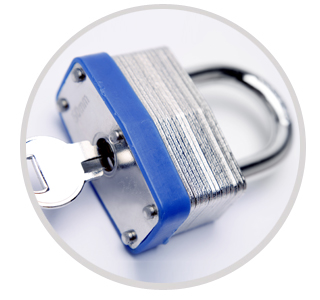
The History of Locks & How they’ve Changed Through Time
The need for the protection of your personal items has spanned throughout several thousand years. However, like any technology, people quickly learned ways to get around it, which lead to locks that are more complex. The history of locks is a long and interesting history, but there are a few key time-frames that critically impacted the lock industry:
The History of Locks:
More than six-thousand years ago: It’s commonly believed that the first locks were invented and implemented by the Greek and Roman empires. They started out as simple knots made out of rope. These locks were primitive and didn’t prevent robberies, instead, they were able to show the owner only if someone had gotten into their valuables.
Since they were not very effective at keeping valuables safe, the issue gave rise to a new kind of lock…
Roughly six-thousand years ago:
The first evidence of a mechanical lock came from Egypt. An Egyptian locksmith was able to create the first pin tumbler lock made entirely out of wood.
1st Millennia BC:
Greek locks were viewed as unreliable, by the Romans and Egyptians were quickly gaining credibility with their lock making abilities. Soon Greeks were able to adapt and expand on the Roman’s technology and soon the first all-metal locks were born.
Dark ages:
Lock pickers were honing in on their craft with simplistic locks, which lead to the rise of more complex locks to protect against lock-pickers. A plethora of attempts were made to confuse and deter would-be lock pickers from robbing owners including; complex key mechanisms, fake key holes, and complicated designs.
18th Century:
Robert Barronin discovered how to make the world’s first reliable, secure, double acting tumbler-lock. His invention was the springboard for many other advances by locksmiths.
Early 20th Century:
Manual lock production became obsolete, allowing locksmiths to mass produce locks, not only at a cheaper rate, but also in larger volumes. Allowing for a larger distribution area at a lower cost to customers who wanted to protect their belongings
Fast-forward to 1924:
Improving upon the designs of his predecessors, Harry Soref created today’s modern laminated padlock in the 1920’s, the design is still used in modern lock production today.
With there being such an apparent need to protect one’s belongings, it’s no wonder that locks advanced so quickly throughout the ages. If you have valuables, either monetary or sentimental, it’s a good idea to contact a professional locksmith who can help guide your choices to keep your belongings safe.

 347-797-1671
347-797-1671



 +1 347-797-1671
+1 347-797-1671 info@cobralocksmiths.com
info@cobralocksmiths.com Connect with us
Connect with us
 Tap Here To Call Us
Tap Here To Call Us

Comments are closed here.